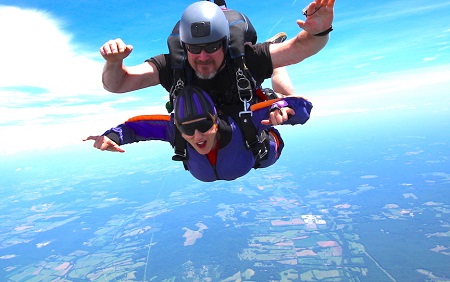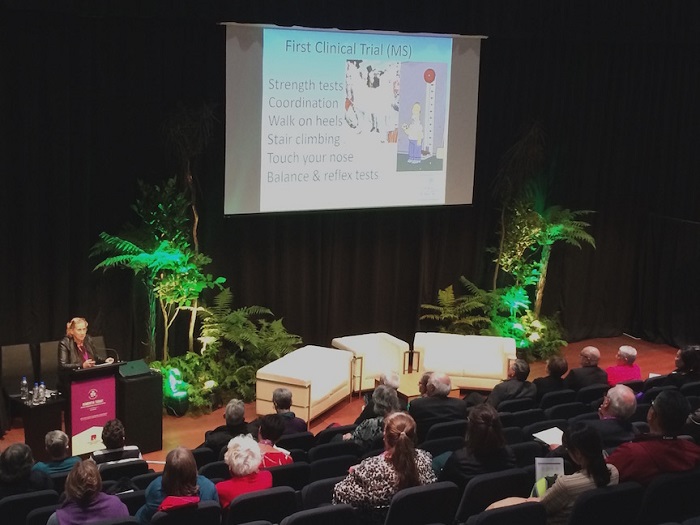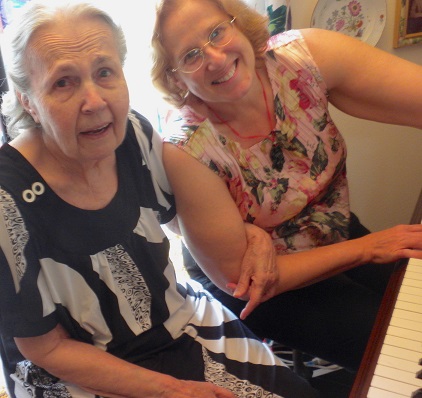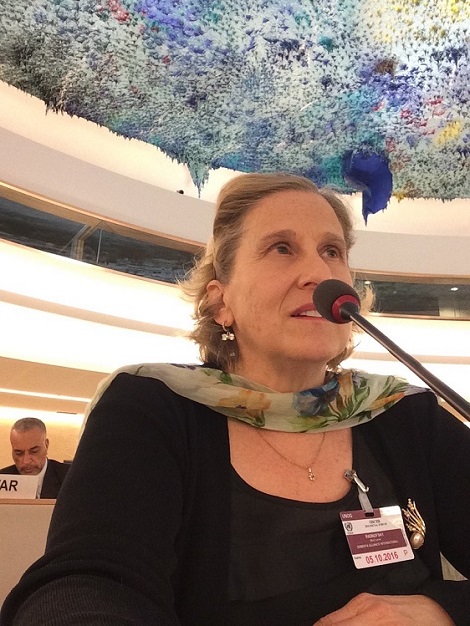 Pennsylvania-born, Texas-raised, world-traveled, Virginia-resident Mary Radnofsky, PhD, is an intelligent woman, professor, librarian, ghostwriter, editor, scuba diver, human rights advocate, and has much to live for. But the infrastructure of her life has had a few potholes.
Pennsylvania-born, Texas-raised, world-traveled, Virginia-resident Mary Radnofsky, PhD, is an intelligent woman, professor, librarian, ghostwriter, editor, scuba diver, human rights advocate, and has much to live for. But the infrastructure of her life has had a few potholes.
Starting a job as Curriculum Designer in 2001, she fell down the grand staircase at work and shattered her leg. A few days later, she felt the foundation of her house shake violently as a 9/11 plane crashed into the Pentagon five miles away. During this time, she said, “I had strange, mini-fainting spells; I’d black out and start to fall, but wake up before I hit the ground. And I started going deaf.”
“Typical White Matter Loss for Someone Your Age”
“By 2005, I lost my hearing in one ear, and still fainted for no reason. After an MRI showed white spots on my brain, a radiologist suspected Multiple Sclerosis. But the neurologist explained it was ‘typical white matter loss for someone your age.’”
Mary was only 47.
She dismissed the MS diagnosis and worked several jobs for the next eight years. She moved to Hawaii and taught research methods at the university; that is, until unusual misunderstandings arose with colleagues and students. She recalled conversations clearly. “I remembered events, people, and decisions. Turns out I just remembered them differently from everyone else.”
“One day in class, I reminded students of an assignment. Twenty bright faces looked at me and protested. Normally, I’d have argued. But this time, I didn’t argue or joke; it became one of the first undeniable cues that something was wrong.”
“Looking back, I could see the degenerative nature of the situation. Divorce. Broken friendships. Bad investments. Wrong decisions. You chalk it up to the other person being a jerk. But twenty healthy young people standing firm, you realize, WHOA, maybe it’s me! I just couldn’t figure out why.”
Needing greater medical care options, she returned to Virginia in 2013.
No, it’s Not Depression but a Rare Form of Dementia
“I was depressed. Nothing was working out. I applied for 200 jobs and interviewed for some. I couldn’t get hired. I started seeing a psychologist. After my sixth visit, I got lost driving to her office. Crying in the car, I called and told her. Finally there, I talked about a minute; she recognized it was more than depression, and referred me to a doctor immediately. He ordered an MRI and neurology appointment.”
Mary has the analytical skills to teach graduate students the rigors of quantitative and qualitative research. She wants answers when things don’t make sense. After mini strokes, white matter anomalies, suspected MS, deafness, and remembering things differently, she demands, “What’s going on? I don’t have time for this; I’ve got to get better.”
Quite by accident, a research neurologist, typically in a lab, but filling in at a clinic the day of her appointment, looked at her MRIs. He diagnosed “Leukodystrophy,” a rare genetic disease that causes dementia. Like MS, it destroys myelin in the brain. Mary explains there are over fifty known leukodystrophies and many more of unknown origin. She’s been researching them, of course.
But she originally dismissed the seriousness of her diagnosis as she recalls it. “I was a bit flip at first. “So, it’s got a killer name. Oops! She grins at the pun, then points to an MRI and asks the neurologist/researcher, ‘All these white spots – how do you get rid of them?'” Of course, he can’t. She persists, “But there’s got to be something I can do – drugs, exercise, nutrition….” He prescribes a drug for Alzheimer’s symptoms, supplements, and he listens.

As she reflects on it, her late mother’s dementia may have been caused by this rare condition as well.
Follow-up medical opinions ranged from depression to good problem-solving ability with the brain of a 90-year-old, but a strong cognitive reserve.
Three months after diagnosis, she woke up one morning with left side numbness and paralysis, drove to the hospital and found she’d had some mini strokes. Fortunately, she regained full function except some feeling in her left hand.
Whirlwind Worldly Traveler
Mary is a survivor. She’s also an advocate for people with dementia. Last April, she gave a keynote on her participation in clinical trials at the Alzheimer’s Disease International Conference in Budapest. In June, she represented Dementia Alliance International (DAI), an advocacy organization of people with dementia, at the United Nations Conference of States Parties regarding the UN Convention on the Rights of Persons with Disabilities in New York. Ironically, of the 168 signatories on this treaty, America has not yet ratified it.
In October, she represented DAI in Geneva, and spoke at the UN on the human rights of people with dementia who are not supported as well as people with other disabilities. In November, she presented at the Pacific Regional Alzheimer’s conference in New Zealand. Twenty-four hours later, she flew to Israel to address EMDA, the Alzheimer’s society, on what it’s like striving to live well with dementia.
How the Diagnosis Changed Mary
“I’m happier, healthier. Ironic, hmm? Because I do have a degenerative brain disease, though, I’m evolving into someone different.”
When asked, she answers, “I’m more sensitive to emotions and interactions between people. I value relationships more. I’m more patient. I let go of small problems (like getting cut off on the road).”
“I was seeing the detrimental effect of getting upset – I’d cry and irritate my throat, feel miserable, and not be able to function. It stressed my heart, stomach, and intestines. That can shorten my lifespan and ruin the quality of my life. I sure as hell don’t want anything shortening my life. I want to live! And I want to live well. I deserve to be as happy as people without dementia.”
A powerful message if we’re willing to learn from people living with dementia despite the stigma. I realized Mary had something valuable to teach us after reading her article about trying to grasp a piece of the “Old Me” (pre-dementia) as she comes to terms with the “New Me” (with dementia). Click on One. It Can Be Everything. [TCV Update 9/30/2022: URL updated]








